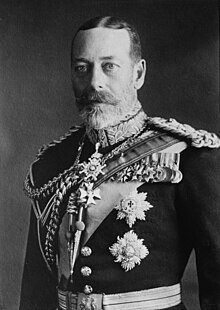Portal:1920s
The 1920s Portal
Silent films were popular in this decade, with the highest-grossing film of this decade being either the American silent epic adventure-drama film Ben-Hur: A Tale of the Christ or the American silent war drama film The Big Parade, depending on the metrics used. Sinclair Lewis was a popular author in the United States in the 1920s, with his books Main Street and Elmer Gantry becoming best-sellers. Best-selling books outside the US included the Czech book The Good Soldier Švejk, which sold 20 million copies. Songs of this decade included "Mack the Knife" and "Tiptoe Through the Tulips". During the 1920s, the world population increased from 1.87 to 2.05 billion, with approximately 700 million births and 525 million deaths in total. (Full article...) Selected article - Western fashion in the 1920s underwent a modernization. For women, fashion had continued to change away from the extravagant and restrictive styles of the Victorian and Edwardian periods, and towards looser clothing which revealed more of the arms and legs, that had begun at least a decade prior with the rising of hemlines to the ankle and the movement from the S-bend corset to the columnar silhouette of the 1910s. Men also began to wear less formal daily attire and athletic clothing or 'Sportswear' became a part of mainstream fashion for the first time. The 1920s are characterized by two distinct periods of fashion: in the early part of the decade, change was slower, and there was more reluctance to wear the new, revealing popular styles. From 1925, the public more passionately embraced the styles now typically associated with the Roaring Twenties. These styles continued to characterize fashion until the worldwide depression worsened in 1931. (Full article...)Featured picture Sultan al-Atrash was a prominent Arab Druze leader, Syrian nationalist and Commander General of the Syrian Revolution (1925–1927). He fought against the Ottomans, French, and even against the Syrian government in days of dictatorship. One of the most influential figures in Syrian and Druze history, he played a major role in deciding the destiny of Jabal ad-Duruz and of Syria in general. Did you know...
Related portalsSelected biography -George V (George Frederick Ernest Albert; 3 June 1865 – 20 January 1936) was King of the United Kingdom and the British Dominions, and Emperor of India, from 6 May 1910 until his death in 1936. George was born during the reign of his paternal grandmother, Queen Victoria, as the second son of the Prince and Princess of Wales (later King Edward VII and Queen Alexandra). He was third in the line of succession to the British throne behind his father and his elder brother, Prince Albert Victor. From 1877 to 1892, George served in the Royal Navy, until his elder brother's unexpected death in January 1892 put him directly in line for the throne. The next year, George married his brother's fiancée, Princess Victoria Mary of Teck, and they had six children. When Queen Victoria died in 1901, George's father ascended the throne as Edward VII, and George was created Prince of Wales. He became king-emperor on his father's death in 1910. (Full article...)TopicsWikiProjects
List articlesMore Did you know (auto generated)
CategoriesGeneral imagesThe following are images from various 1920s-related articles on Wikipedia.
Recognized content
Associated WikimediaThe following Wikimedia Foundation sister projects provide more on this subject:
Discover Wikipedia using portals |




















































